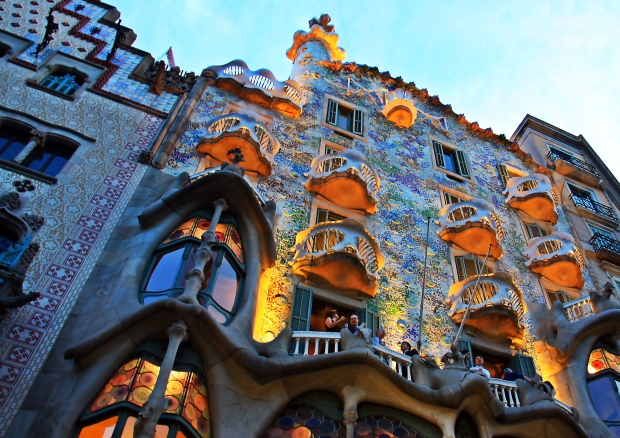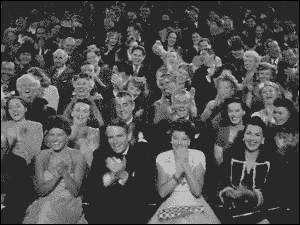Successful Nonprofit Arts Organizations, Like Successful Buildings, Depend on Successful Hierarchies
Level One:
Bricklayers. Carpenters. Stagehands. Electricians. Actors. Musicians. Painters. Singers. Writers.
Easy to find hacks. Difficult to find experts. Project-based.
Level Two:
Foremen. Department heads. Designers. Curators. Musical directors.
Small universe of successful ones. More skills required. Still project-based. Work toward a larger goal than Level One, namely a finished piece. Excellent collaboration skills.
Level Three:
Contractors. Directors.
Smaller universe still. Hire and manage Level One and Two (no requirement to perform at their skill level). Work toward a slightly larger picture, although still project based.
Level Four:
Architects. Executive/Artistic/General/Producing Directors.
Scarce universe of specialists. Determine “what.” Hire Level Three – several Level Threes, in fact. Understand projects, themes, and cohesion.
Level Five:
Owners. Boards.
Tiny, zealous universe. Hire Level Four. Determine “how.” Has personal stake.
Level Six:
The Community. The Mission.
Top of the hierarchy. Determines “why.”
Talk to Me Like I’m 10: a Lesson in Long-Term Planning for Artistic Directors and Board Chairs
Does long-term planning cause a rift between your artistic director and those other people?
Does it cause discord between your board chair and those other people?
Seen all the time among arts charities: carefully (and successfully) executed annual development plans reduced to rubble after the board institutes a high-priced capital campaign. The capital campaign sucks up all in its path, causing 5 years of stakeholder repair. Indispensable Chair happy. Staff leaves.
Artistic directors substituting their taste for vision and their personal and professional relationships for core values. Idiosyncrasy obviates mission. Indispensable AD happy. Board leaves.
Both cases: company imperiled, stakeholders leaving.
Time to create an action plan, written at a 5th grade level. Make it about impact rather than income. Test the theory that your arts nonprofit is indispensable. Make sure that your most important stakeholders don’t leave.
Special 2016 “Alan Harrison’s Birthday” Edition: Pack Up the Babies and Grab the Old Ladies – And an Easy-To-Fulfill Wish List

I was born on May 14. Conceived on a hot August night. Neil Diamond would’ve been proud. He was old enough to have a kid then, so…who knows? Brother Love? Are you my papa?
From him, I want flowers.
From you, I want (this is your cue):
- A 137-word card. ( <–Yes, that’s a link.)
- Share your favorite 137 Words post with your social network (that’s “share,” not “like”).
- To join a great company with a great mission. In Seattle.
- Health for The Kid.
- Guidance for The Kid.
- The love of my life to be happy, fulfilled, and curious. You know who you are.
- The ability for you to guide your favorite nonprofit to safety, security, and success.
- Brilliantly measurable missions, better than you believe you’re capable of.
- Complete, successful execution of those brilliant new missions.
- Pie, not cake.
“See a Need, Fill a Need” (As Long as Your Arts Aren’t the Need)
What’s the biggest societal issue in your personal world?
Americans in April named their list. What’s yours?
Economy, racial injustice, government dissatisfaction, immigration, terrorism. Unsolvable as big issues. Possibly solvable as small ones.
Hunger in your neighborhood? Support the food bank. Find ways for it to thrive so that many can survive without resorting to lawlessness.
Specific racial and income injustice in your town? Support the agencies that convene and expose the problems to the light. Find ways to gather people together who might never otherwise come together – and de-mythologize the stereotypes of the bad [ethnics – fill in your own blank] or the bad [other ethnics] or the bad [government officials], etc.
And do it using your art as a tool.
How?
You now have step A and step Z. Just fill in steps B through Y.
Nonprofit Arts Executives: After the Ask (for anything, actually), It’s Fast “Yes,” Slow “No”… Try a Slow “Yes” Instead
If you don’t hear right away, it’s probably “no.”
That goes for asks, offers, hiring, and anything else you require.
And that goes for you, too, when your stakeholders ask, offer, hire, and anything else they may require.
Reflection is the predictable path toward rationalization to the “no.” This is why the phrase “upon reflection” is almost always followed by a version of “we’ve decided not to change.” After all, as a rule, it’s easier not to change than to take a risk.
Many arts charity executives preach the glory of “managed risk” (an oxymoron, of sorts) and value fiscal responsibility above social impact. To be clear, social impact is central to the success of the mission; fiscal responsibility is a valuable business practice.
If “yes” leads to greater impact, then stop saying “no”… especially upon reflection.
Arts Boards: What to do When Your Arts Leader(s) No Longer Know the Difference Between Boredom and Discipline
Your theater produced a hit. Tickets sold out for days. Extended as far as you could.
Do it again next year?
No. Your outward-facing mission execution is more important than the sales of any one play. Gauge this particular play and its impact. If it’s a fit (not just a hit), consider rescheduling the next production and run this play until its inevitable end. Then close it forever.
If all your plays are mission-driven, every experience is predictable in its impact. That’s called discipline, and it’s what makes arts organizations successful.
Too many artistic directors choose to produce vanity events instead. That’s called boredom, and board chairs have to act on that kind of crisis in leadership.
Coke may make many products, but they still make Coke. Remember what happened when they got bored with Coke’s taste?
Face-palms in the arts world: Oh, somewhere in this favored land the sun is shining bright; the band is playing somewhere, and somewhere hearts are light

Somewhere…
- A managing director is face-palming because the budget draft is still a departmental wish list;
- A marketing director is face-palming because the artistic director decided that he knew more about marketing than the marketing director;
- A development director is face-palming because the board chair has fashioned a multi-million dollar “capital” campaign (actually, a “get-out-of-debt” campaign) with no feasibility study, no regard to the annual development campaign, and no accountability to anyone else;
- An artistic director is face-palming because the plays she wants to do don’t jibe with the mission of the company;
- A board member is face-palming because every meeting is about reporting, money, by-laws, and the gala;
And somewhere, performing arts audiences and constituents are collectively face-palming, hoping against hope that the arts folks in their region remember that for them, it’s about the art.
Arts Organizations: What is Your Art? Is it “It?” Is it a Picture of “It?” A Report of “It?” None of the Above?

45 years ago today, February 9, an earthquake happened. I was shaken out of bed and looked out the window just in time to see a brick chimney fall on Dr. Prince’s new 240Z. That’s what happened to me.
We turned on the television to see films about the Van Norman Dam — in danger of bursting. I saw that through a lens.
The next day’s LA Times had the front-page story, “DAY OF DISASTER — Quake Leaves 42 Dead, 1,000 Hurt; Periled Dam Forces 40,000 to Flee.” I read that report.
The racing results, as always, were in the sports section. A square box on the front page said so. Horse racing is a popular entertainment. I didn’t care.
Is your art happening to your constituents? Is it through a filter? Is it second-hand? Or is it entertainment? Only one is personally meaningful.
Organizational Health Can Be Measured by the Number of Donors Who Don’t Have to Give to Your Arts Organization
How many non-board (or non-ex-board) members give to your arts organization?
How many non-staff members?
How many non-parents (if you do activities that include children)?
How many people who don’t attend your gala or other special event?
How many people who refuse donor benefits?
In other words, how many people donate simply based on your mission, programming, and activities; or by trusting a stakeholder of your mission, programming, and activities without expectation of a return?
Count the households of donors who donated all on their own. If the number is small, create a special campaign to draw them in, even if the donation is a simple $50. And thank them – they’re giving for no reason at all, except for unconditional love.
Ultimately, the health of your organization is measured by the number of those who unconditionally support it.
The Christmas Arts Season is Almost Here: Time for Much Mooing and Missions Drifting Higher than the Plowed Snow Blocking your Driveway
Once there was a theatre company that produced new plays. However, during the holiday season, they produced “A Christmas Carol.”
Foundation leaders that supported this company asked one day, “Why do you produce ‘A Christmas Carol’ when it has nothing to do with your mission or the rest of your activities?”
“Because,” said a truthful board president, “it’s our ‘cash cow.’ And we need to milk it for all its worth to pay for everything else we do.”
“Oh,” said the foundation leaders. “Does it?”
“Yes,” said the president. “It’s a good thing, too.”
The leaders huddled together.
“That’s wonderful,” they said. “It follows, then, that we can now fund companies whose mission aligns with ours. With your ‘cash cow,’ you don’t need us. Thank you!”
And then they cut funding to the theatre company to zero.
Aphorisms for the Modern Arts Charity Leader
If it ain’t broke, break it. Then fix it.
You only read books in one direction.
Your legacy ends when you leave.
Institutional survival is not the goal.
Missions are gods; mission statements are bibles.
The best leaders are the best assistants.
Learn why before you continue.
Success is measured by impact, not excellence.
“Fiscal responsibility” is a business practice, not a mission statement.
Volunteers are employees who work for $0.
If your people are averaging 50+ hours a week, you’re failing.
Always use transitive verbs in your mission statements.
The cool kids are back in high school.
Sharpen your point of view; that’s why it’s a point.
Be completely, spectacularly wrong.
Treat candidates like employees.
Treat employees like human beings.
Treat human beings as though you are one.
Fire yourself regularly; interview yourself for your job.
Be funnier.
The Case for Individual Artist Support Begins with Measuring Hope
Painter sculptor carver glassblower metal-artist potter actor set-designer lighting-designer costume-designer sound-designer playwright director choreographer jazz-dancer ballet-dancer modern-dancer opera-singer jazz-singer classical-singer musical-comedy-singer performance-artist rock-singer rock-musician classical-musician poet novelist ballroom-dancer hip-hop-dancer hip-hop-singer beat-boxer aerialist cinematographer folk-dancer native-dancer folk-singer Latin-dancer swing-dancer belly-dancer tap-dancer clog-dancer sketch-artist screenwriter clown mime country-singer storyteller improviser busker magician juggler composer lyricist ethnically-specific-singer ethnically-specific-dancer ethnically-specific-visual-artist
Apologies to those I neglected.
Art breathes life into our lives. Art offers us the only thing on the planet that has the capacity to make us better – hope. Even existentialism compels us to rebel… and hope nonetheless.
Unfortunately, hope is not a measurable outcome.
We must find it within our best selves to find a system to fund individual artists separate and apart from arts organizations. Not instead of, but in addition to. We deserve to hope for better.
The Creation of Art: Diamonds and Great Art Come from Tension and Pressure
Artists don’t work alone. They require collaborators.
A script isn’t a play. A score isn’t a symphony. A scene isn’t a painting. Choreography isn’t a dance. A libretto and score isn’t an opera.
And a vision isn’t an arts charity.
For any piece of art to be considered finished (and viable), a team is required. Playwrights, composers, choreographers, visual artists, and arts charities may be the ones who create artistic launching pads, but art, like space exploration, requires a slew of equal partners. Among those: directors, performers, designers, interpreters, tools and toolmakers, and audiences. All partners create tension. And that’s good.
No single artist deserves immunity from collaborative pressure. A piece of true art isn’t done until it’s done. Not before. Not after. The immutable pressure of the finish line makes the race exciting, meaningful, and artistic.








